How Is the LDS Enclave On Physical Health & Mental Health?
Part 4 of the LDS Enclave Analysis: health & technology

Introduction
By almost every physical health measure, the LDS enclave shines. Rates of smoking, drinking, obesity, diabetes, and premature death are all impressively low. Life expectancy is high. Teen births and drug-related deaths are rare. It’s one of the healthiest regions in America.
But not everything is so cleanly positive. Suicide rates are worryingly high. Mental health outcomes are average. And as digital life expands, many report feeling overwhelmed, distrustful, or exhausted by their online exposure.
In this post — the fourth in my LDS Enclave series — I take a look at the health of this community in a broader sense: body, mind, and technology. What’s working? What’s at risk? And what can we learn about modern well-being from one of America’s most religious and community-oriented regions?
Charts
Health-wise, the LDS enclave stands out from the rest of the country. Its smoking rate (12%) is the lowest of all communities measured, and binge drinking is similarly rare. Drug overdose deaths are also far below the national norm. Rates of chronic illness like diabetes are among the lowest in America, and sexually transmitted infections occur far less often than in most regions. Infant mortality, teen pregnancy, and premature death rates are all strikingly low — evidence of a population that benefits from healthy behaviors, strong prenatal care, and a stable social structure.
Life expectancy is near the very top, matched only by affluent suburbs, and residents are more likely to stay physically active in their leisure time. Obesity rates are modest, suggesting the LDS enclave’s lifestyle continues to support long-term physical health.
When it comes to public safety, the community experiences some of the lowest homicide and alcohol-related driving death rates in the nation. The one outlier is juvenile delinquency, where rates are higher than average. This one is honestly puzzling to me. Maybe there are reporting differences or concentrated law enforcement focus on youth offenses for some reason? Or perhaps some youthful experimentation/rebellion from the strong religious structure? If any readers have ideas as to why this might be I’d love to hear. Curious to learn more!
Mental health tells a more complex story. The LDS enclave has an average supply of mental health providers, and residents report similar rates of poor mental health days compared to other communities. Yet suicide rates are significantly higher than most, surpassed only by a few rural or struggling regions. This suggests that social cohesion and healthy living, while protective in many ways, do not eliminate deeper emotional struggles.
Technology use is another area of tension. The LDS enclave is highly connected — broadband access and internet use are among the highest in the country. But with that comes a notable sense of digital fatigue: residents are the most likely in America to say they wish they could take a break from technology. They also show relatively low trust in government or companies to safeguard their personal data.
Taken together, the numbers show a community that is thriving physically, largely safe, and socially strong — yet still wrestling with modern pressures, especially in the realms of mental well-being and the digital world.
Takeaways
The data paints a striking picture: the LDS enclave is one of the healthiest regions in America. Its residents smoke and drink less, live longer, experience fewer chronic conditions, and raise children in stable households. The physical and social benefits of this lifestyle are real and impressive.
But that’s only part of the story.
Beneath the surface, there are signs of strain — especially when it comes to mental health and the pressures of modern digital life. Suicide rates remain high, despite strong family ties and religious community. Many feel overwhelmed or uneasy about their online lives, expressing low trust in institutions to protect them (outside of their community which they DO trust).
This tension — between exceptional physical health and lingering emotional or digital stress — may say something broader about modern life in even the most tightly knit communities. Faith and structure can offer protection, but they aren’t a cure-all. And in a world moving faster and more digitally connected every year, even the most resilient enclaves are not immune to the pressures.
Next week, I actually have a bonus post planned diving into the macroeconomics of the LDS enclave (assuming I am able to find all the data I need 🤞🤞). What is the economic output of the LDS enclave and how does it compare to other communities in the US and other countries in the world?
Let me know if you have any thoughts in the comments and see you next week!


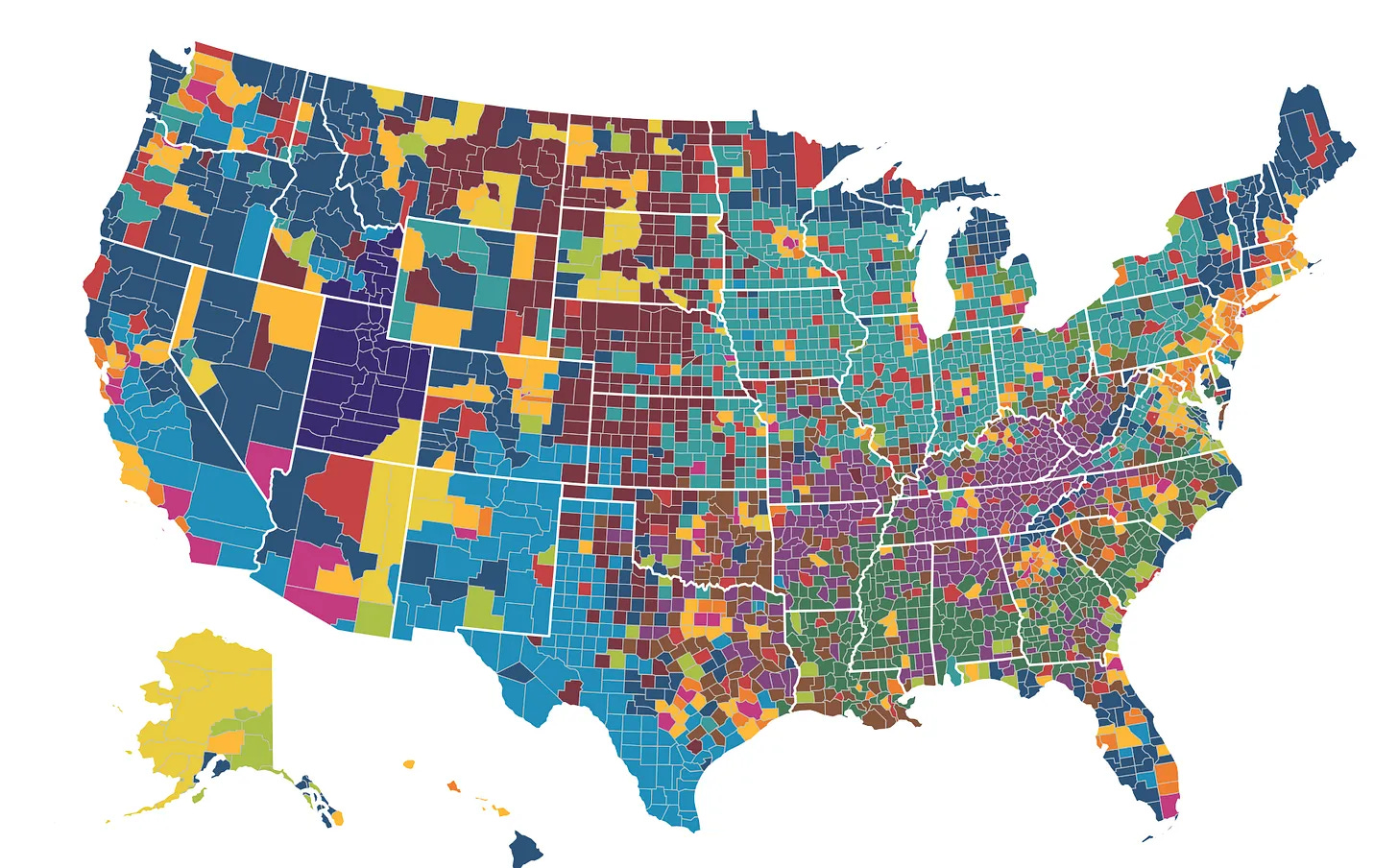
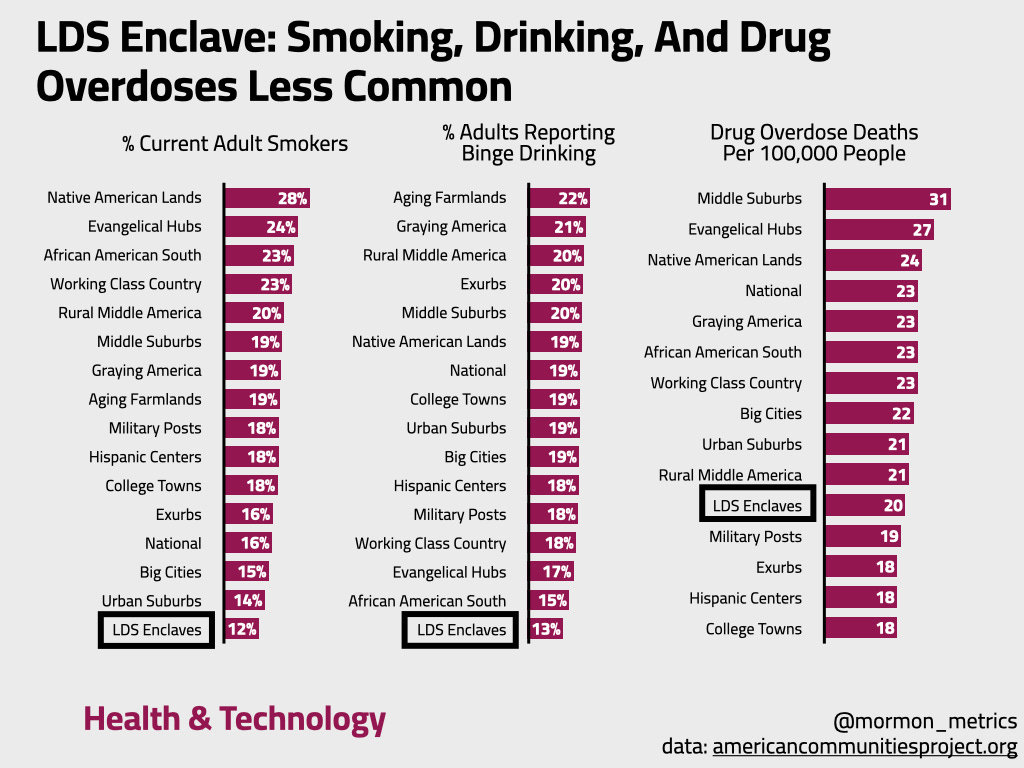
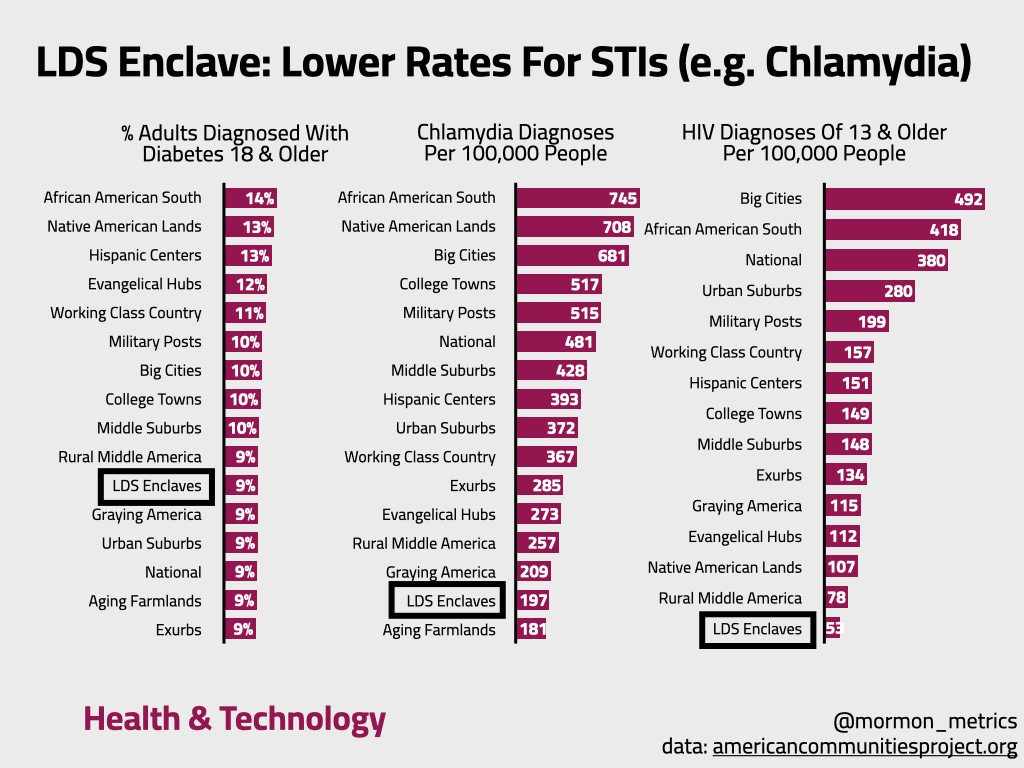
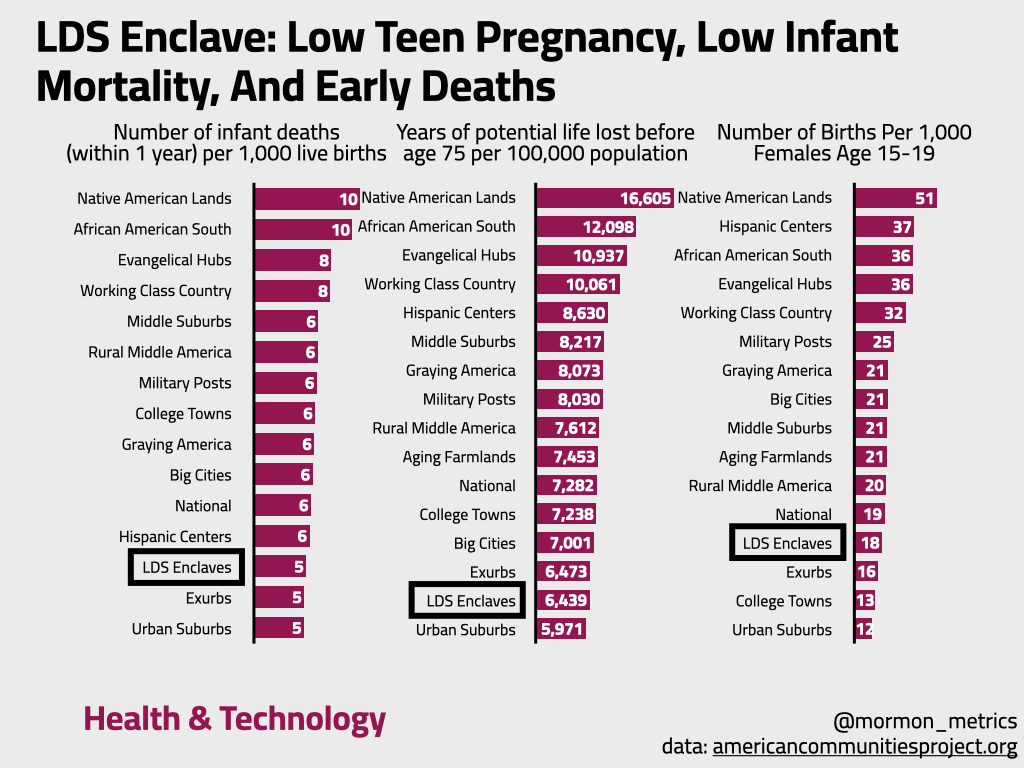
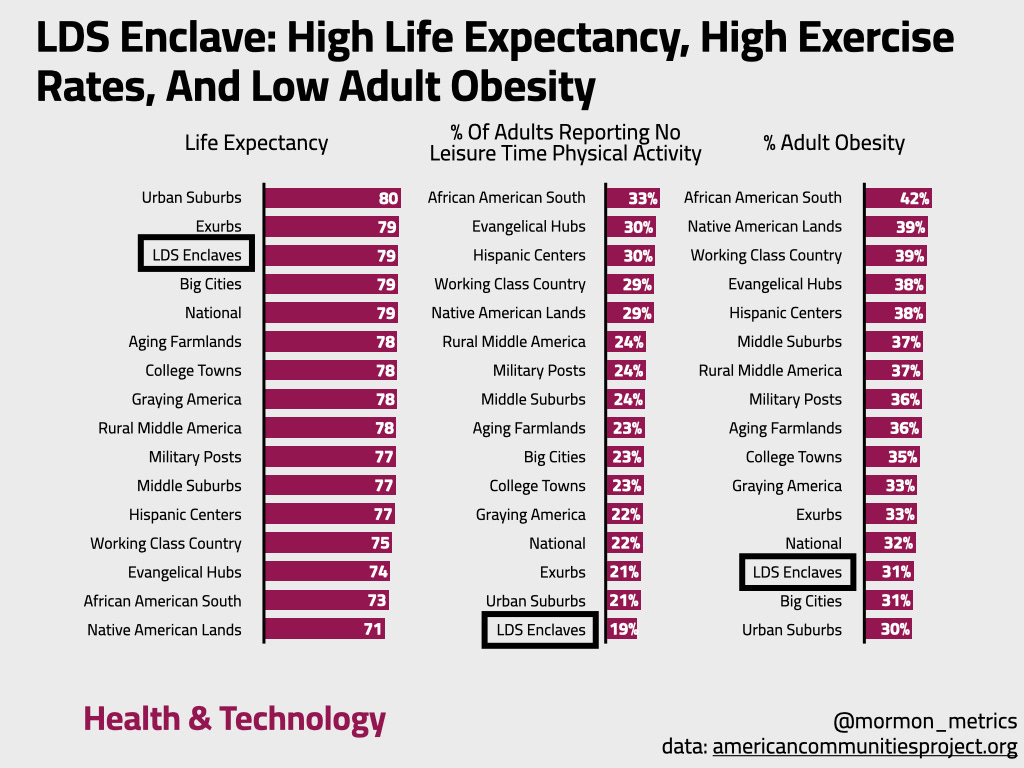
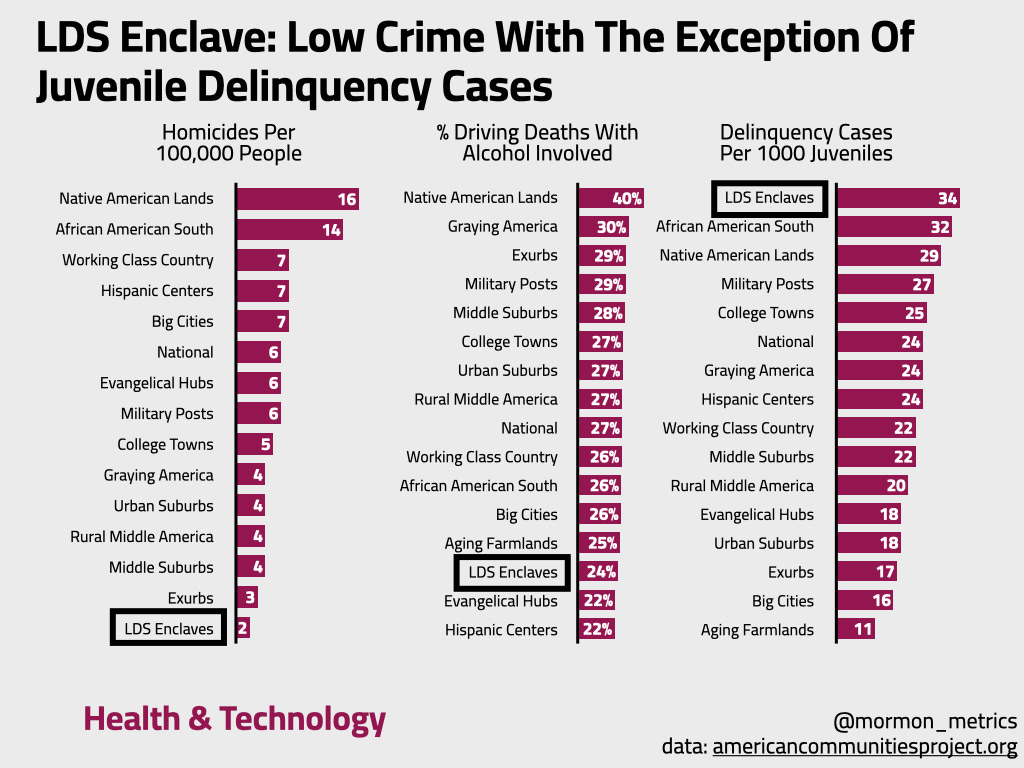
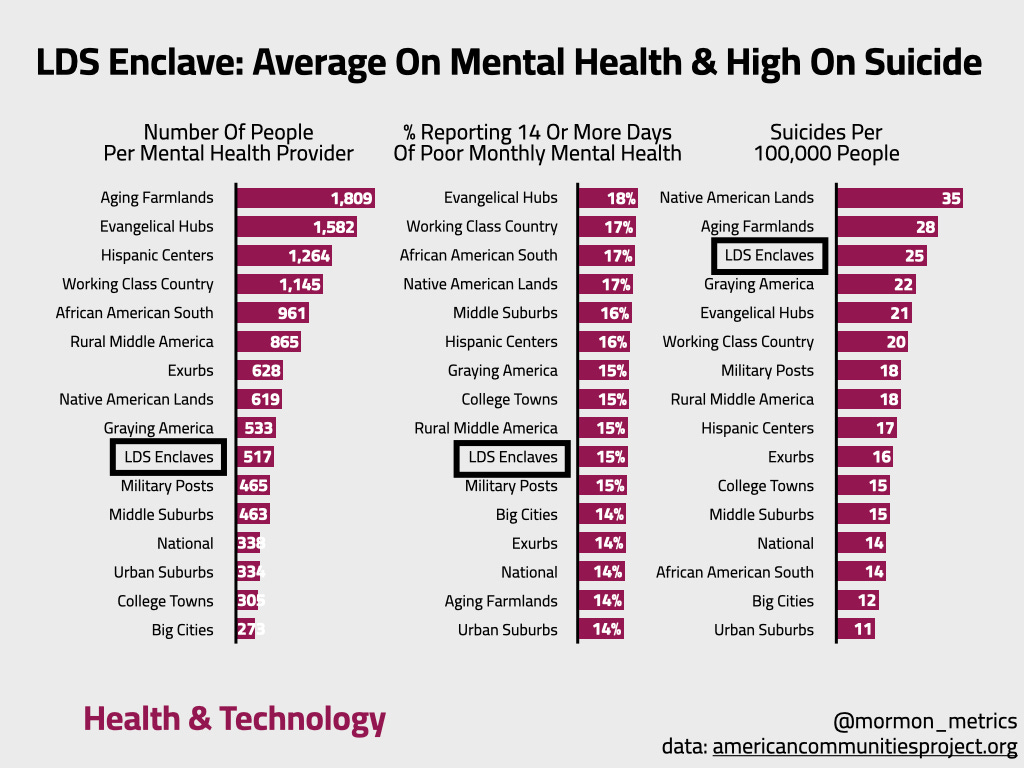
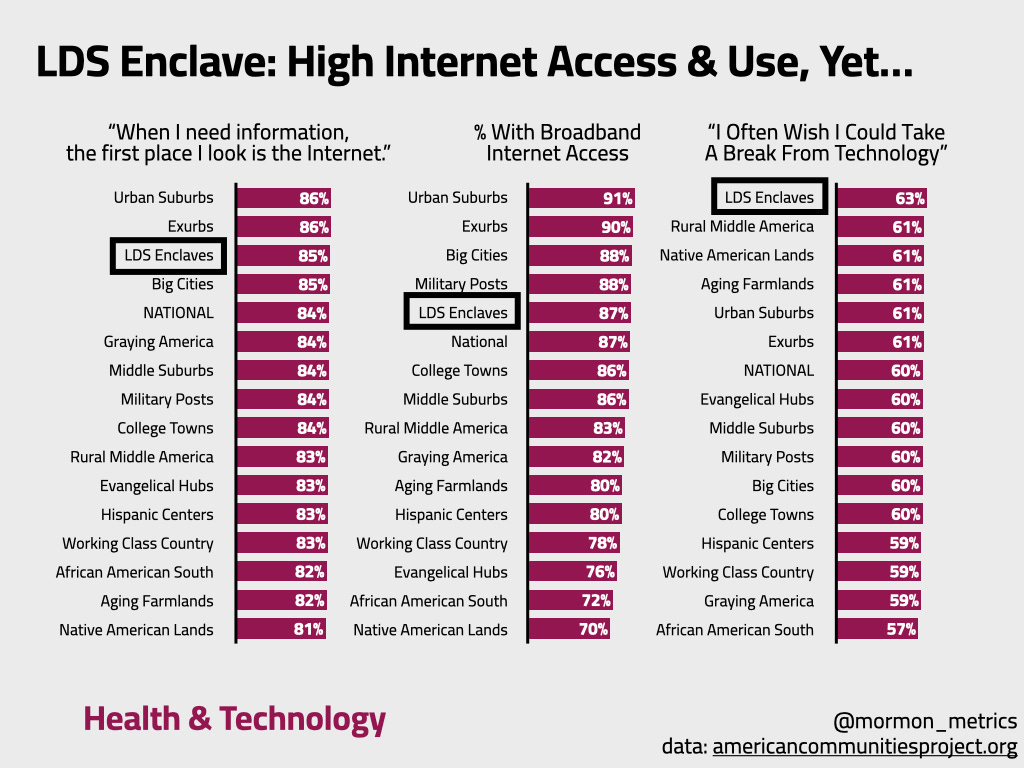
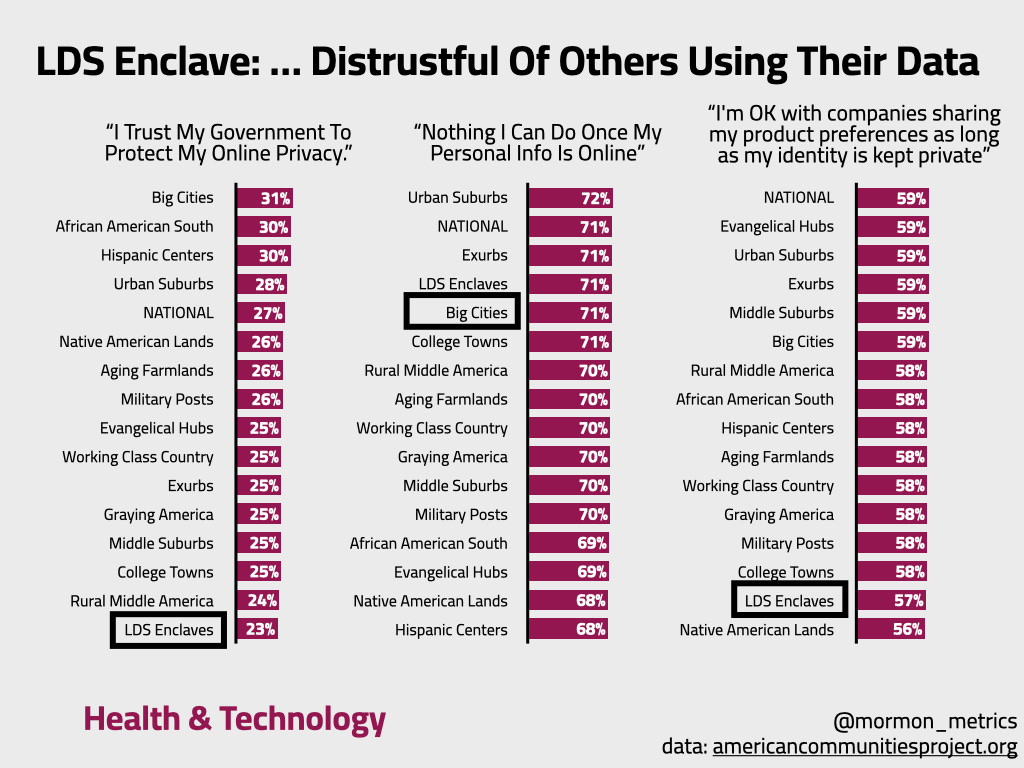
There is a persistent and strong correlation between altitude and suicide deaths. No idea why. https://www.sciencedirect.com/science/article/pii/S0022395622003818
I know this is unanswerable, but it makes we wonder how all these suicides correlate to sexual orientation and gender identity.